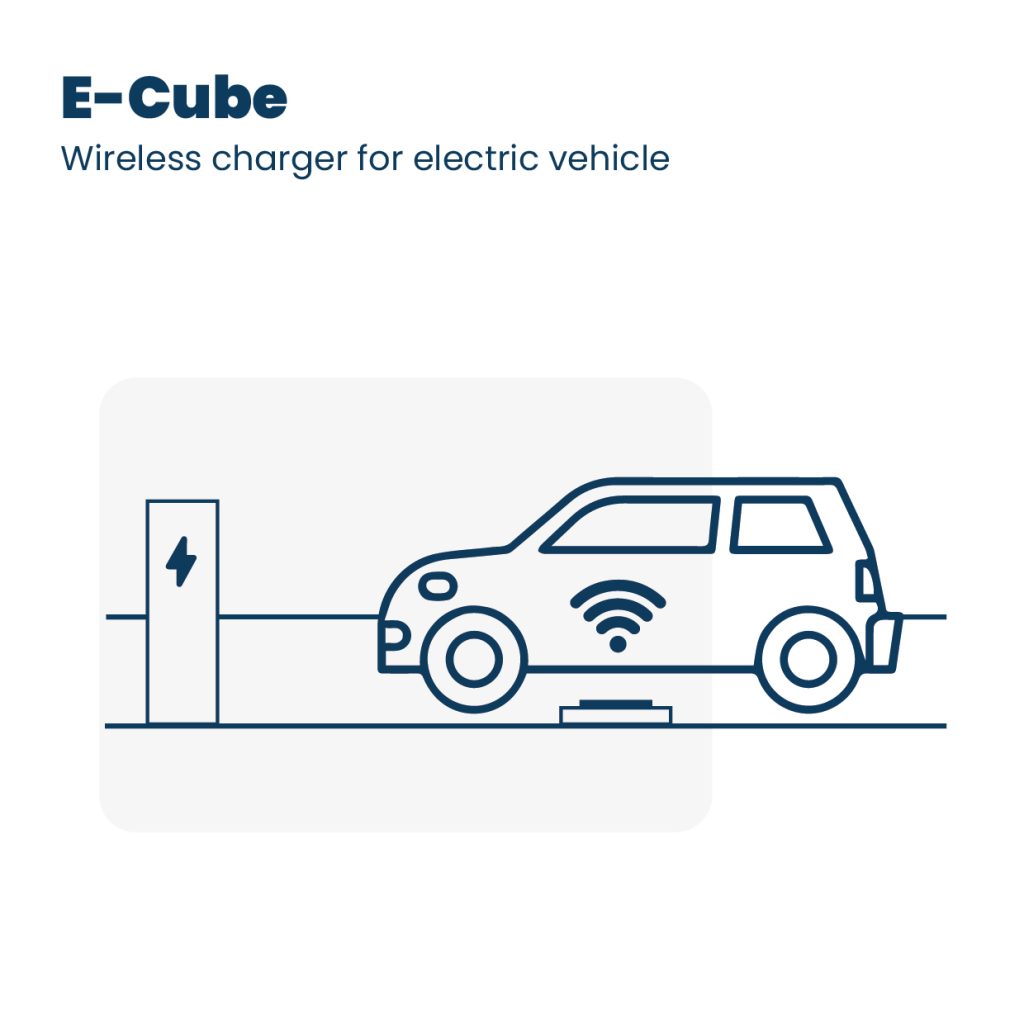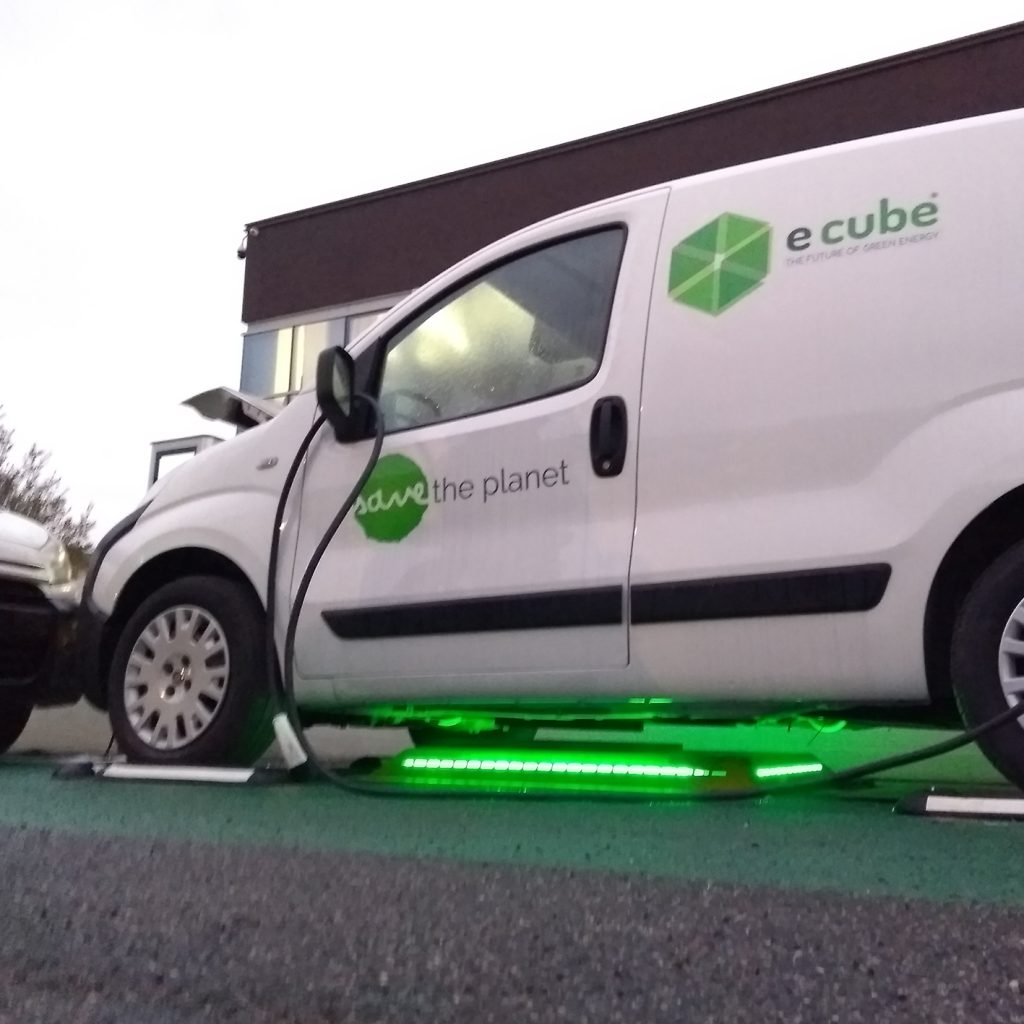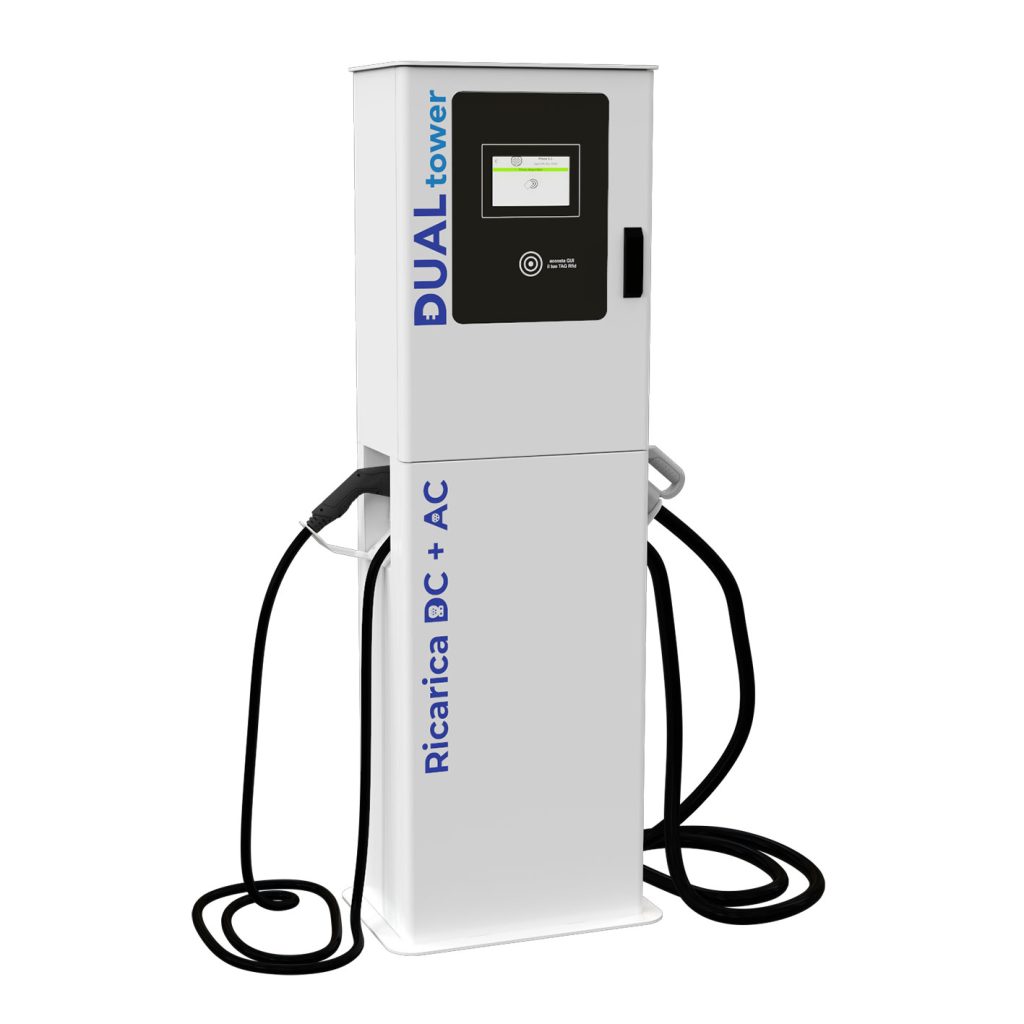E-CUBE.
Applications
Charging electric vehicles for corporate fleets.
Value
Charging the vehicle without cables, thanks to the induction charging system.
Technology
Proprietary technologies for power management and wireless charging.
- Avoid the connection of cables
- Improving reliability
- Ensuring operability
Problem
In many situations, connecting cables for charging electric vehicles in corporate fleets can be problematic and unreliable, such as due to false contacts, incorrect procedure by the operator in connecting the cable, etc.
For vocational vehicles, such as last-mile delivery vans and garbage disposal trucks, a failed recharge can result in significant economic damage, with the vehicle being grounded for the entire day.
Solution
The E-CUBE wireless charging system enables charging an electric vehicle with up to 3kW of power. The transmitter is embedded in a cockpit on the ground, eliminating surface space. The receiver is installed underneath the vehicle at a distance of about 15 cm from the ground; it is equipped with in-vehicle control electronics that communicate with the Battery Management System and the on-board charger via a data line.
A connection via Bluetooth allows the energy transmitter and receiver to communicate remotely, exchanging data on the charging in progress and monitoring any anomalies so that the process can be interrupted in case of failure.
The wireless charging system can be operated remotely like a regular charging station via the OCPP protocol. A working prototype was developed and installed in a customer's company parking lot for charging an industrial vehicle.
Share this project
We can do this and more for electric mobility and to optimize energy use.
Related Solutions
DUAL - DC+AC Charging
SEA
Collaborations
S&h has carried out projects in collaboration with leading universities and companies, including: CERN, University of Milan, Milan Polytechnic, BRIN and Studio Palmanova 28.














